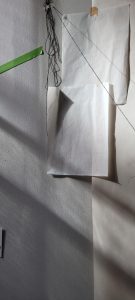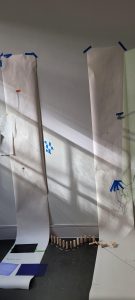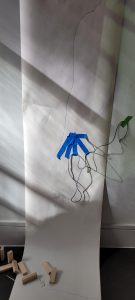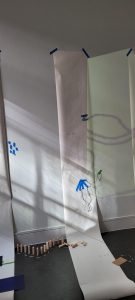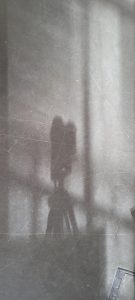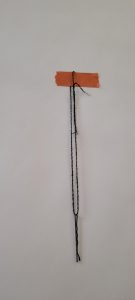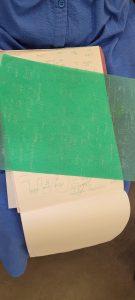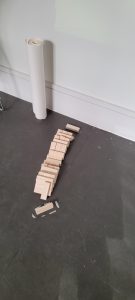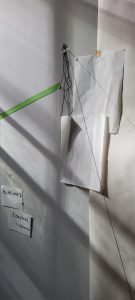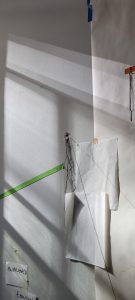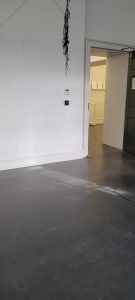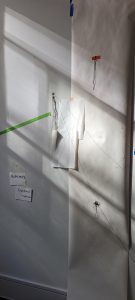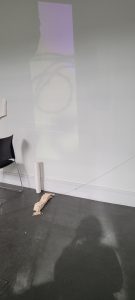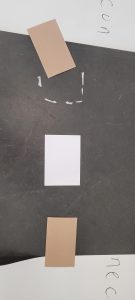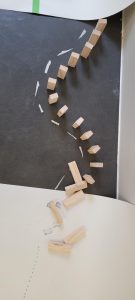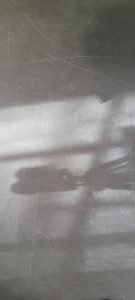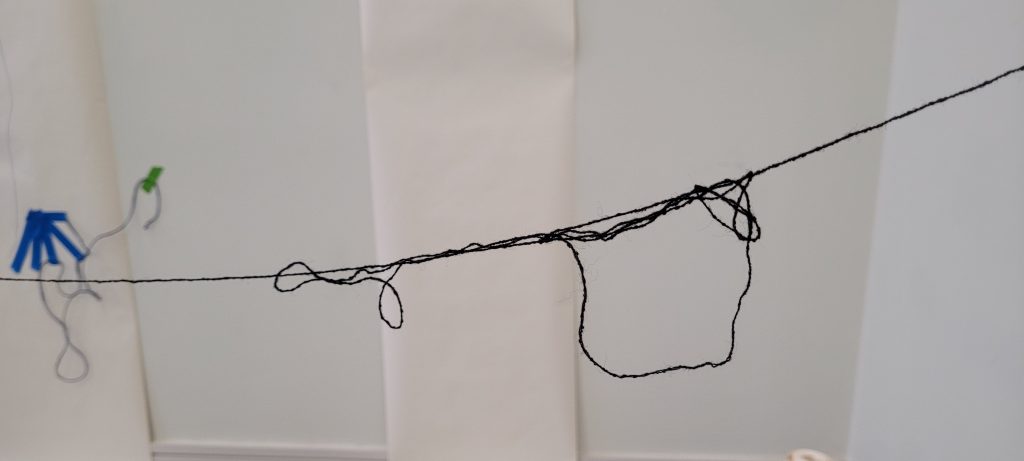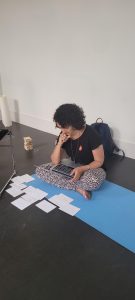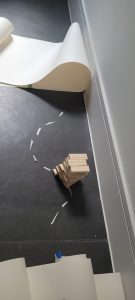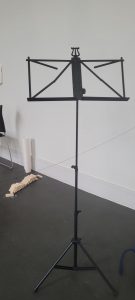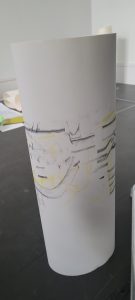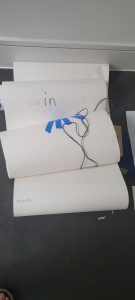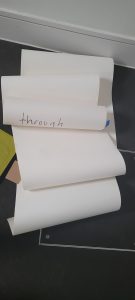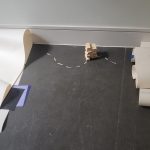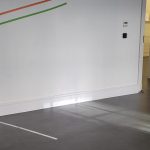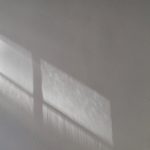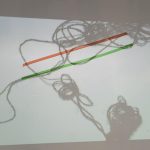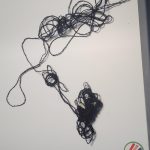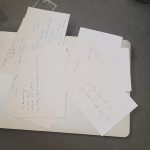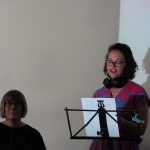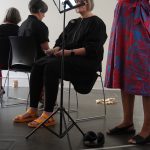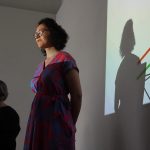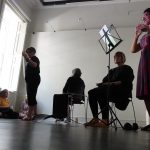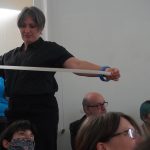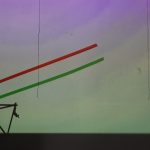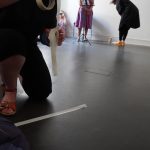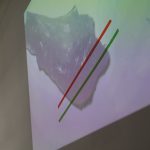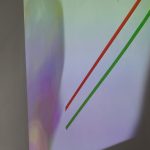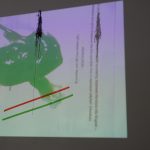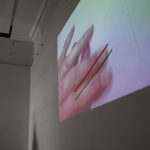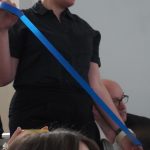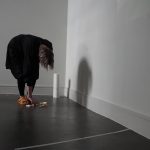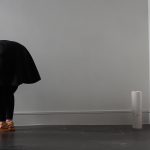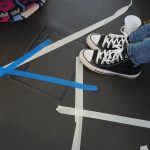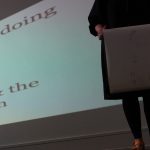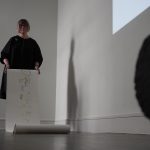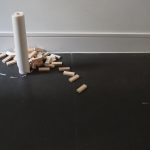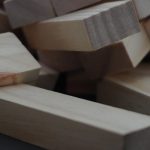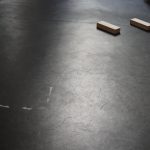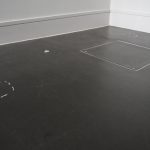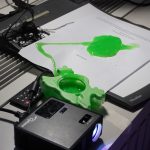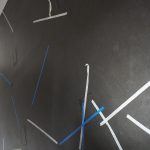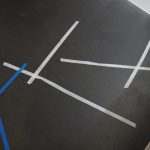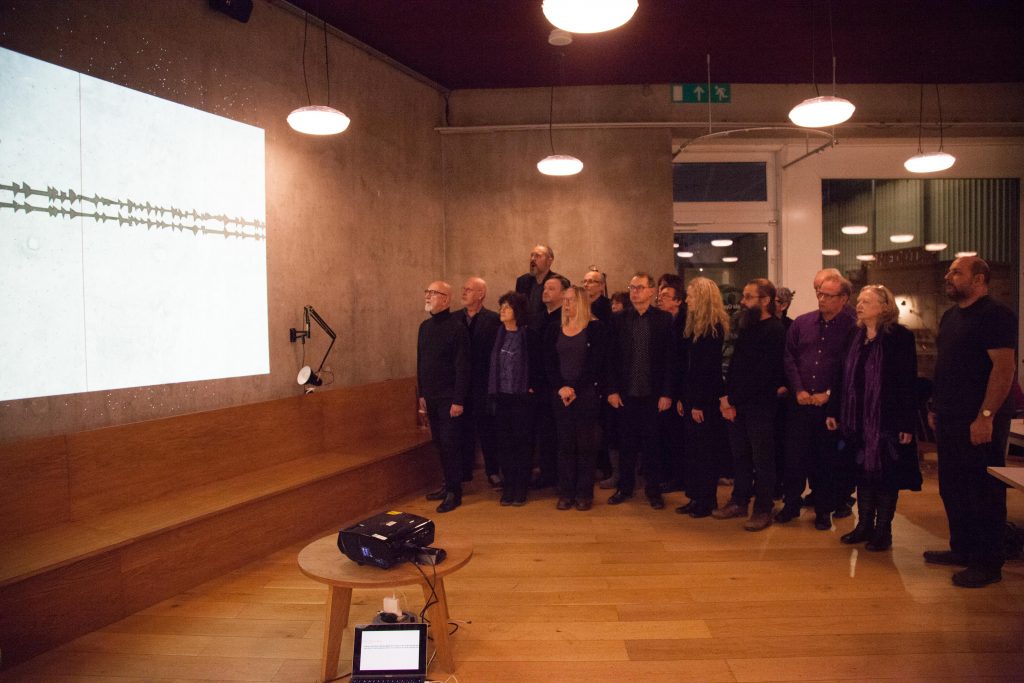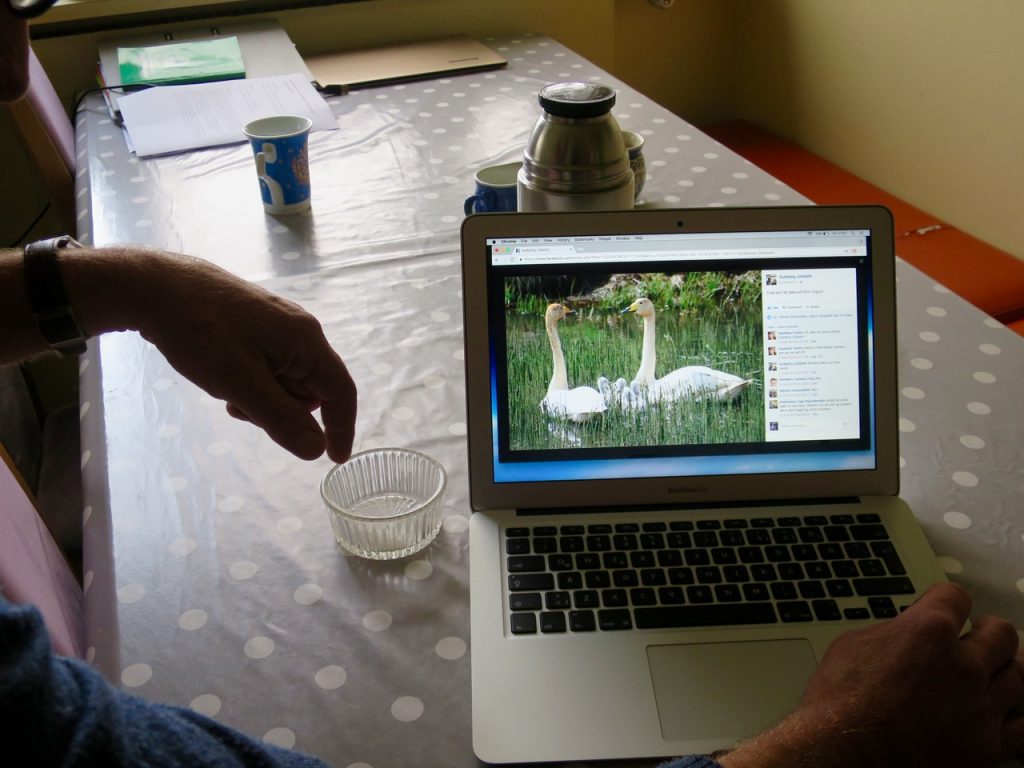Translation Zone(s): Experiential Translation in Action part 1
A project by Heather Connelly, Johanna Hӓllsten, Belén Cezero and Shauna Laurel Jones
Summary:
Over the three days of the Experiential Translation conference, these artists/writers/researchers will conduct a live examination of ‘Experiential Translation’ through multimodal art practices. They will enter into an open dialogue with one another to explore this concept as a physical and embodied process, translating and translated, thinking through making, attentive and receptive in every instant. This iterative process of revising, revisiting, reviewing will generate material that will be shared during and after the event, inviting participants to bear witness to the affective nature of art-and-translation and its potential to elicit new knowledge.
This mini-residency will culminate in a 30 min Performative Lecture on the final day of the conference on Friday 15th July.
The lecture will evolve out of the work, dialogue and thinking ‘on’ and ‘through’ experiential translation produced whilst ‘in residence’ at the conference – providing an insight into what has emerged. The hybrid format invites the audience through text, image and sound to engage with the speculative body of work that the 4 artists and writer have made collectively, providing an opportunity to feed into the next phase of work.
Somerset House – Day 1
1.1 Beginnings
How do we work together to examine experiential translation?
- action
- dialogue
- materials
- projection
- space
- sound
- gesture
- attention
1.2 UNRAVELLING
- What is experiential translation?
- What does it mean to us?
- What is its role within our practices?
- How can art practice contribute to this inquiry?
- Is experiential translation significant/ or relevant to artistic research/practice? why?
- What does artistic research bring?
- What is translation vs transposition?
- Are we ‘just’ responding?
- Does translation need an obvious source – starting point?
- What are the synergies between art and translation practices and processes?
- How do these material experiments elicit new ways of thinking about/understanding this phenomenon?
- Are we translating? without a source? What are the (our) limits?
- Do we have a set of rules?
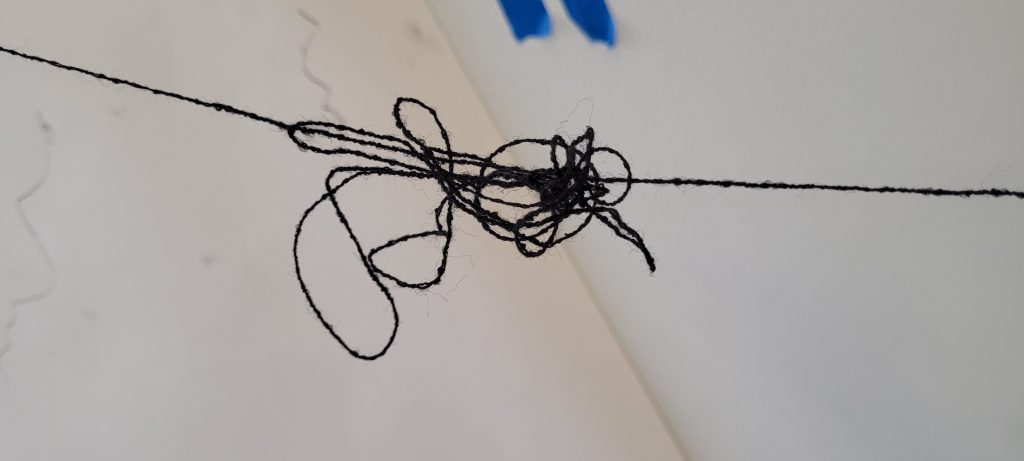
What does it ‘feel like’ to be in translation? to experience translation?
experiential translation in action.
IN
DOING, BEING & LISTENING
THROUGH
PRACTICE, MEDIA, ACTION & EXPERIENCE
Somerset House – Day 2
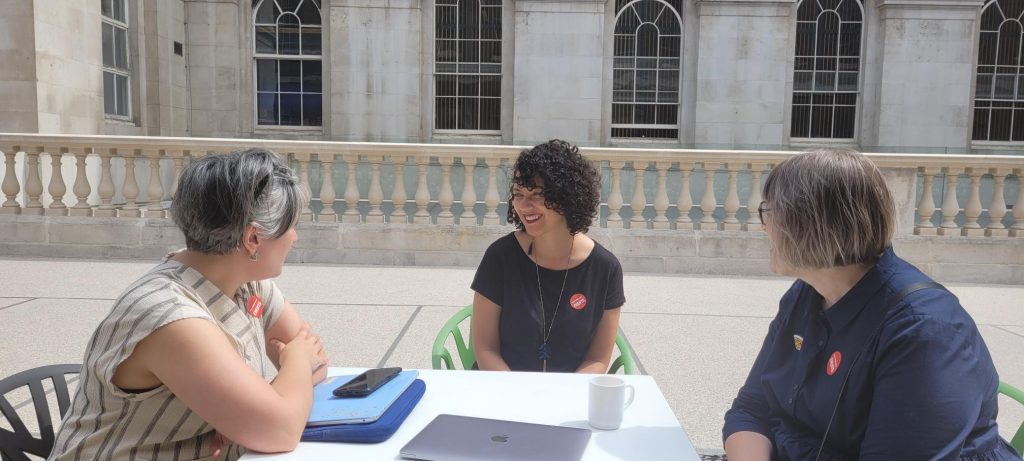
2.1 Positions
- Artistic Research
- Ways of knowing
- Intentionality
- Amongst, with(in)
WHAT is EXPERIENTIAL?
2.2 Questions
- What is the role of the ‘target’ audience? – reception – audience ‘experience’ -context?
- How do we work together?
- How do our interests? practices intersect?
- How do we create space and time to think and make? interact, critically engage and listen to others?
- When can we trust and go with our instincts?
- How do we frame what we do?
- What is it we are doing?
2.3 Refine
- Pay attention to what is emerging
- Work within the time restraint
- The interruptions in the space
- The extraneous sounds
- Share thoughts, languages, approaches, media
JUST do IT?
2.4 Review & consolidate
- In
- Play
- Structure
- Body
- Experience
- Listen
- Provoke
- Practice
Somerset House – Day 3
3.1 Rehearse
- Gather
- Share
- Review
- Time
- Finalise
3.2 Presentation
3.3 Trace & Residue
4 Reflections & Analysis
…….to be continued
Participants
Belén Cerezo
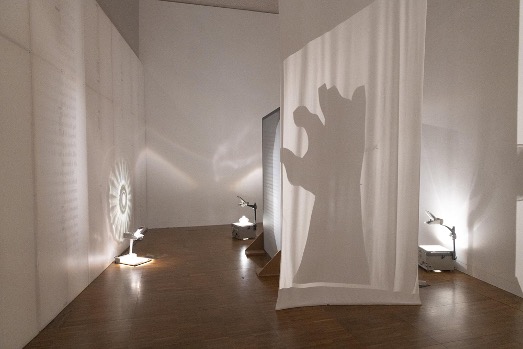
A Pool of Light, performative installation, The Collection, The Lincoln, 2019
Bio: Postdoctoral researcher at the Faculty of Fine Arts, University of the Basque Country, Bilbao.
Her work examines the functioning of images and attends to the transition from a representational model to a performative one that explores the new forms of action, relationship and practice generated by images. She makes moving-image installations, videos and photographs. Since 2017, her main line of enquiry stems from her encounter with the work of Brazilian writer Clarice Lispector.
Recent projects (selection): online exhibition Fabulation for Future (2022) Konrad Wolf University, Seeing Bodies (2020), artist’s publication with commissioned texts and interview (2020) group show Myths of the Near Future, TEA, Tenerife (2019), group show Un triángulo_tres vertices_ser rizoma, Eskualdea, Alava, (2019), residency-exhibition A Pool of Light, OPEN 3, The Collection, Lincoln (2019), residency in the Northeast of Brazil in BOLIDE 1050 (2018), and solo show Viviendo el día, CC Montehermoso, Vitoria, Spain (2018), and ‘Rehearsing Memory, Belton 2015’, commission for Belton House, The National Trust, (2015).
Belén Cerezo is a member in Primary, Nottingham, and she is part of the collective ‘Film Free and Easy’.
Belén’s particular interest in participating in this Constellation in relation to Experiential Translation:
As a Spanish speaker who has worked and lived in the UK for many years, translating and moving from one language to another has been part of my everyday experience. And since 2017, I have been working on an ongoing artistic research that brings in some characteristics of unique and unclassifiable literary works of the Brazilian writer Clarice Lispector (1920-1977) into my artistic work. One of the initial goals was to explore the proposition of filming with the body, filming in the way Lispector understood writing, that is, as a form of sustained participation and commitment to world-life. Helene Cixous defined Lispector’s writing as “writing with the body”. Lispector breaks grammar rules, attends to the sonority of words and she describes everyday textures and details but not narrations of events.
The work of Clarice Lispector has shown me other ways of understanding-feeling, other ways of being. In Lispector’s work, humans are never in the centre and, for instance, her chronicles offer a transcorporal time-space in which things, animals and human beings get intertwined, confused and entangled, and in which the corporality is not confined to the so-called ‘humans’.
This has In the last years, my interest in visual technologies has aligned with feminist new materialisms and post-humanism thought, and with my investigation into the literary work of the Brazilian Clarice Lispector
Johanna Hӓllsten
Johanna Hällsten Rupture & Flow performed by Juxtavoices and conductor Martin Archer, Nottingham Contemporary 2019
Bio:
Dr. Johanna Hällsten is a Swedish artist now living in the UK. Working with text, sound and performance, Hällsten’s work focuses on translation between different cultures, species, and forms, to address the interrelation between sounds and environments. Attempting to give voice to phenomena we do not normally think of as having a voice, the work is usually site related and produced in collaboration with organisations, institutions and professionals in other fields.
Her work has been included in e.g. InDialogue, Nottingham Contemporary, Personal Structures, Venice Biennale, ANTI festival, EV+A. She has published in e.g. The Front Edge of Environmental Aesthetics, Contemporary Aesthetics, Somatechnics, EUP journal.
W: http://johannahallsten.co.uk/
Johanna‘s particular interest in participating in this Constellation in relation to Experiential Translation:
As a native Swedish speaker, who has lived in the UK for a considerable part of my life, I still feel I am a foreigner; always just that little bit outside, not quite fully integrated, nor wanting to be. I find this position of being foreign (other) a fruitful but also very fraught position to be in. It allows for a gap of potential to open up in everyday encounters and conversations. It is this gap (interval, interlude, moment of movement; of change), that I am particularly interested in pursuing in my research. The potential for failure or rupture, of misunderstanding, is large, and yet it is the point at which possibility is also the greatest, for a different understanding of a language, a person, an animal, a plant – in short an other.
This project creates an opportunity to collaborate, seeking new connections and positions from which to learn and understand the world. I seek to explore, and utilise, a multitude of translation processes, from sonic to image based, to explore how we communicate that which is perhaps incommunicable, with an other (human or non-human)
Shauna Laurel Jones
Of Birds and Barley, essay published in Orion magazine, Summer 2020
Bio:
Shauna is a writer at the intersection of nature, aesthetics, language, and identity. Her research explores artistic engagement with the natural world and personal connections with landscape and wildlife. Shauna’s recent essays have appeared in Orion and Carve Magazine; forthcoming work includes a contribution to a publication on red-listed birds by the British Trust for Ornithology, as well as a chapter in the anthology Animal Dignity (ed. Melanie Challenger; Bloomsbury, 2023). In 2021, Shauna was shortlisted for the Nan Shepherd Prize for underrepresented voices in nature writing.
Originally from the US, Shauna received an MA in art history from the University of California, Santa Barbara. She then spent a decade in Iceland, where she immersed herself as a writer, educator, and translator in Reykjavík’s vibrant art scene. In 2010, she founded Art in Translation, a major transdisciplinary conference and exhibition on language and the arts held three times at the University of Iceland and the Nordic House. Shauna went on to receive an MSc in environmental studies from the University of Iceland with a thesis on local conservation biopolitics. Since 2018, she has lived in London, where in addition to her writing she continues her freelance work as a copyeditor and Icelandic-to-English translator.
W: https://www.shaunalaureljones.com/
Shauna‘s particular interest in participating in this Constellation in relation to Experiential Translation:
When I came up with the idea for Art in Translation, it was born of the questions: Why did so many Icelanders tell me it was easier to speak about art in English rather than in their mother tongue? How could I write about artworks with linguistic or cultural concepts that could not be translated out of Icelandic? And how was the production and reception of art in this small, remote community being affected by so much recent international attention? The conference was an exhilarating, edifying way to pursue these and other questions on a large scale, involving scholars from many disciplines and practitioners in all fields of the arts from over forty countries across the globe.
Twelve years later, I am no longer at the periphery but in one of the epicentres of the art world. I am back in a country where my native language—kind of—is spoken. And yet, jumping into the conversation is challenging. How do you transplant yourself into the discourse when your roots grow in multiple fields? How do you introduce yourself when you are an immigrant twice over? Which English should you use, even, when you had already loosened your attachment to your original version? These are not questions for you, these are questions for me; and yet, I suppose you have questions of your own that are similar, overlapping, parallel, for you also inhabit this world that has become so internationally tangled and interdisciplinarily complex. I look forward to participating in Experiential Translation in order to explore my embodied, intersubjective, aesthetic, and emotional relationship with language and semiotics.

